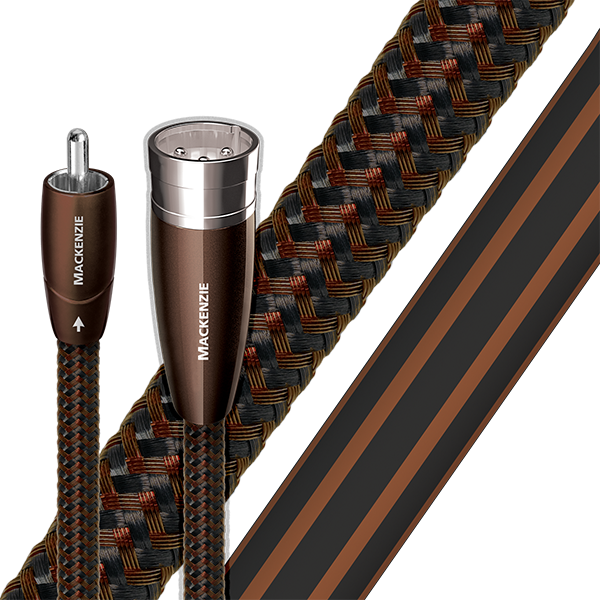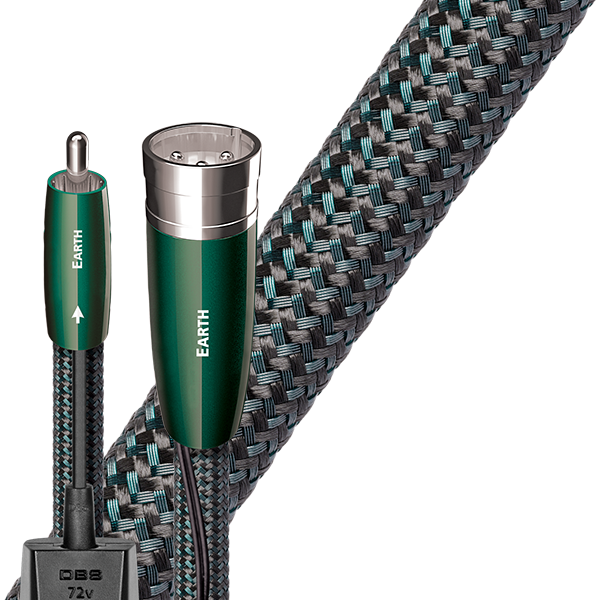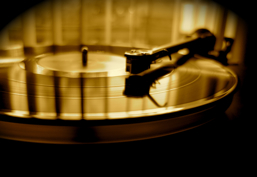Audio cables are a curious thing, especially for those that listen closely and hear differences. Materials matter, and more importantly how these materials interact and affect the quality of signal propagation is measurable. I am certainly in the camp of hearing the effects of conductor type, dielectric materials, and various shielding methods. Once the signal leaves your source, preamp, or amp, the cable type can have audible signatures that once heard, are hard to ignore. The more resolving one’s audio system is, the more these differences can stand out.

Having already listened to solid core digital cables from Audioquest, I was now interested in hearing the analog interconnects also constructed with these similar conductors. The 2 that rose to the top of my listening sessions were the Audioquest Mackenzie and Earth interconnects. To explore the sound these cables presented to an audio system, I was fortunate to not only use a home stereo setup (Benchmark AHB2, Crane Song Avocet, Clearaudio Concept, Moon LP 5.3), but also a professional mastering rig within an acoustically optimized room in Hollywood.
Starting at the mastering facility, we used Lipinski monitors with two time-aligned JL subs. The source for our listening sessions came from the SADIE digital audio workstation. Clocking for the system was provided by a rubidium oscillator distributed to all digital gear used for playback and recording.
While we had an entire loom of Audioquest Mackenzie to interconnect all the gear in the mastering facility, this was not the case with the Earth cables. With this in mind, we felt a good starting point would be to compare the standard stranded cables often used to interconnect the studio (Mogami) with the Mackenzie.
In a mastering studio we often use analog outboard gear (EQs, compressors, etc) for processing. This requires that the digital audio file is played back via a DAW, converted to analog, processed through the outboard gear, then converted back to digital and captured in the digital audio workstation. This process allowed us to record the same music with both the Mogami cable, and the Audioquest cable in use. After the recording through each set of cables, we were able to playback the two audio files and A/B the results in real-time.
The two stereo audio files (time-aligned) were assigned to their own tracks in the DAW, allowing us to easily switch between them and hear the differences. Starting with the Mogami, the soundstage was smaller, and their was a graininess to the sound. Switching to the audio captured through the Audioquest Mackenzie immediately opened the soundstage width and provided a clarity that was easily heard. Myself and several engineers agreed that the Audioquest cables presented a grain-free clarity that was not available with the stranded copper design (Mogami).

While we didn’t have enough of the Earth cables to do the same listening experiment in the mastering room, we did have a pair to audition. So, I decided to check these out in my home stereo system. My good friend came over and helped as we switched back and forth between the Mackenzie and the Earth interconnects.
The sound of the Mackenzie was distortion-free; a stable wide sound-stage, clarity from top to bottom, and excellent stereo depth/height information. Replacing the Mackenzie with the Earth demonstrated further details without being upfront or hard in any way. In fact, the bass was noticeably weighty, carrying the fundamental note with more precision and a deeper impact. Mid-range and high frequency extension proved to be a bit more open and relaxed compared to the Mackenzie.
Digging into the factors of signal transfer will get you started on a path of materials science. Dielectrics (material insulating or surrounding a conductor) can have dramatic affect on the overall sound/energy of an audio signal. I should note that the Earth interconnects are a physically bigger cable. They use FEP air tubes which I think reduces the dielectric absorption of energy in the cable. More specifically, two things are at play here; the air, and the FEP (Fluoro-Polymer). These FEP air tubes provide less contact between the conductor and wall, and the FEP itself provides the lowest energy absorption in an extrudable insulation. These factors may account for some of the sonic differences we heard.
On the other hand, the Mackenzie uses a hard cell foam insulation material to surround the conductors. This foam is then nitrogen injected, a process that creates air between the surrounding material and conductor. The enhanced hard cell foam also allows the conductors to maintain a uniform impedance.
From my experience, outside of conductor type, the most salient sonic inhibitor has been found in dielectric material. But one must be open minded, as a culmination of materials create the sound of Audioquest cables. Further details on their construction can be found at the Audioquest website.
After spending several months with the Audioquest cables I can assuredly contest an enhancement to both professional and audiophile systems. The Mackenzie is my top pick for what audiophiles might consider an affordable top performer. The Earth furthered the sonic traits of the Mackenzie, coaxing out better bass extension and a more dimensional stereo soundstage.
Highly Recommended
Happy Listening!
